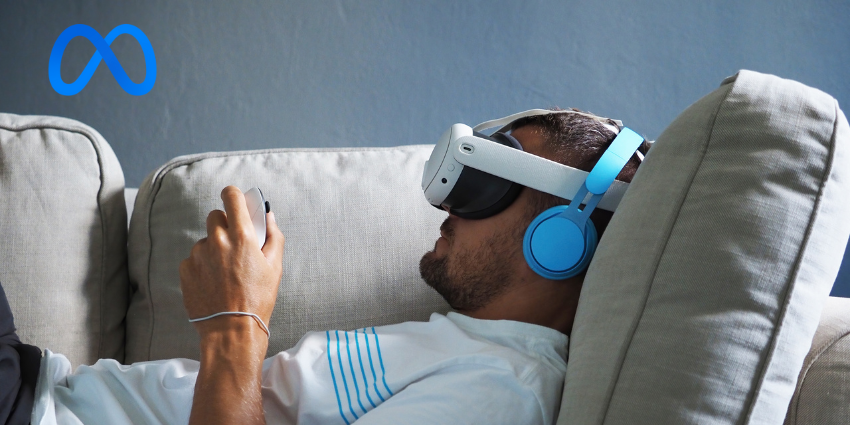What happened to the Xiaomi AR smart glasses? First announced at Mobile World Congress (MWC) in 2023, these specs seemed to have a lot of potential – promising a unique wireless experience, complete with spatial computing capabilities and a potentially affordable price tag.
So, why are these glasses still not available to purchase? Right now seems to be a good time to go back and review these glasses, based on prototype demos. After all, the market for AR glasses is booming. Meta recently demoed its own Orion specs at Meta Connect 2024.
Rumors suggest Apple might be working on some new AR specs too, and Samsung might even decide to switch its upcoming XR headset out for a pair of smart glasses.
This could be the perfect time for Xiaomi to go full-steam ahead and release its glasses to the public. The question is, can they still compete in a world of ever more impressive prototypes?
Xiaomi AR Smart Glasses Discovery Edition: An Overview
Xiaomi has experimented with augmented reality glasses in the past, adding AR specs to their collection of smartphones and other tech solutions back in 2021. However, it wasn’t until MWC 2023 that the company tried to break the mold.
Officially named the “Wireless AR Glass Discovery Edition”, Xiaomi’s glasses turned a lot of heads at the global conference. They were among the first in the industry to achieve a retina-level display, combined with gesture control capabilities and a true “wireless” wearing experience.
Unfortunately, more than a year has passed since Xiaomi demoed these glasses, and very little additional information has been revealed since. Even Xiaomi’s website doesn’t reveal any official information about the glasses. All we have is a somewhat outdated report from February 2023.
Still, we do have a few details about the technical specifications of the yet-to-be-released specs. For instance, we know the glasses have:
- A built-in Snapdragon XR2 Gen 1 chip
- A Proprietary low-latency communication link
- Retina level displays with a PPD of 58
- Micro OLED screens
- A weight of only 126g
- Wireless connectivity for smartphones
- In-built apps
- A unique titanium structure
The Xiaomi AR Smart Glasses: Design and Comfort
It’s difficult to know right now whether Xiaomi’s glasses would compete with leaders like Meta in style – if they were ever released. The prototype specs shown at MWC 2023 were a little chunky compared to some newer options introduced over the last year.
However, they certainly weren’t as bulky as some specs I’ve reviewed. The glasses are similar in style to the Snap Spectacles 5 – giving you a set of “oversized” sunglasses with a silver finish. The glasses feature a micro-OLED screen for each eye, pumping out full HD visuals with up to 1,200 nits of brightness. Plus, there are three forward-facing cameras for spatial mapping and content capturing.
You also get an extremely lightweight experience (just 126g), thanks to Xiaomi’s decision to use lightweight materials like magnesium alloy, carbon fiber, and a proprietary silicon-oxygen anode battery (smaller than a standard lithium battery).
Another thing worth noting is that the glasses also offer a “blackout” mode—ideal for immersing yourself fully in the content you’re viewing. Alternatively, you can choose the transparent mode for a vivid mixed-reality experience.
Performance and Visuals: Lagging Behind?
The chipset was pretty impressive when Xiaomi originally showcased its AR smart glasses (Discovery Edition). The specs featured a Snapdragon XR2 Gen 1 processor – which is the same chip that powers the Meta Quest Pro.
While this chipset is powerful, enabling an incredible display experience, and access to spatial computing abilities (like the option to interact with content using gestures), there are stronger options on the market today. For instance, the Meta Quest 3 and the Quest 3S both use an XR2 Gen 2 Snapdragon chipset – enabling higher performance.
If Xiaomi does decide to sell its specs in the public market, it might need to update its chipset if it wants to take full advantage of the AR glasses boom.
Notably, thanks to the built-in OLED displays, and the relatively powerful chipset, the prototype version of the glasses did deliver a fantastic visual experience (for the most part). They offered a PPD 58 – close to the 60 PPD mark where the human eye can no longer distinguish the display.
Additionally, prototype users said that the smart glasses delivered crisp and vibrant visuals, whether they were using the “transparent” mode or the dark mode, which allowed them to immerse themselves fully into unique app experiences.
Xiaomi AR Smart Glasses: Functionality and Controls
One thing that does give Xiaomi’s AR smart glasses an edge – even as the market continues to evolve is the inclusion of gesture-tracking capabilities. The cameras on the front of the specs don’t just allow users to capture and share content, like some old-fashioned smart glasses. Those cameras also map the world around you and give you unique ways to interact with content.
For instance, if you were using your smart glasses for work, connecting them to your smartphone or another device to create a virtual desktop experience, you could choose between moving and resizing windows with your phone or your hands. If you choose to use your hands, the cameras will track their movement, allowing you to leverage common gestures, like “finger pinches,” to grab and move a piece of content without any controllers.
In the past, this functionality was something of a “breakthrough” in the AR world, as most specs required users to rely exclusively on their phone to interact with content. However, many leading vendors of AR glasses are experimenting with hand tracking today.
This could mean that if Xiaomi does release its specs to the public, it won’t be able to rely exclusively on gesture control as a selling point. Still, it’s worth noting that the experience is still excellent, particularly if you’re using your AR glasses at work, to navigate content when repairing a machine, or setting up a system on the move.
A True Wireless Experience?
By far, one of the things that stood out most to me when I was initially reviewing the Xiaomi AR glasses (in prototype form), was their wireless functionality. Until very recently, finding a pair of true “wireless” smart glasses has been notoriously difficult.
Even leaders in the AR market, like XREAL, have struggled to offer customers a way to completely disconnect their specs from smartphones and laptops. Xiaomi’s demo at MWC showed that the Discovery edition glasses could deliver a genuine wireless experience, thanks to proprietary communication technology, that allows you to link the specs to your smartphone.
All users needed to do was tap their phone to the side of the smart glasses, and an NFC chip would establish a connection. Even the latency was pretty impressive (just 50ms), meaning you wouldn’t have to worry too much about lag from your apps.
Unfortunately, we haven’t really had much of an opportunity to see how well those connections actually work – or what they mean for the battery life of your specs. Although the glasses did include a built-in battery (reducing reliance on connected devices even further), Xiaomi didn’t say how long the battery would typically last.
Will Xiaomi Release its AR Smart Glasses?
When Xiaomi showcased its smart glasses for the first time in 2023, I was incredibly impressed by what they could do. They introduced the world to many new features and capabilities that were previously unavailable on old-fashioned smart specs.
Xiaomi was one of the first vendors to experiment with true mixed reality experiences, spatial computing, and wireless functionality. If they had released those glasses at the end of 2023, the AR market may be in a different space today.
However, too much time has passed. Xiaomi has allowed other competitors to race ahead with more powerful chipsets, better screen technology, and new functionality. In my opinion, if the company were going to release these glasses today, it would probably need to go back to the drawing board and make some significant updates.
That’s not to say Xiaomi won’t take this route, particularly if demand for smart glasses continues to increase in the consumer and enterprise market. However, I think it’s safe to say that – at this point – the glasses we saw at MWC 2023 will probably never arrive for the public – at least not in their original form.







